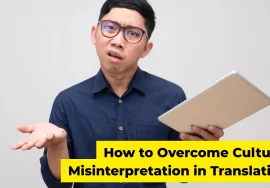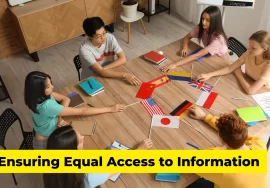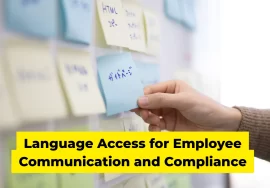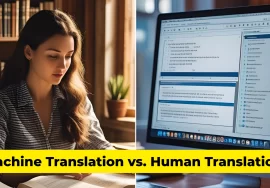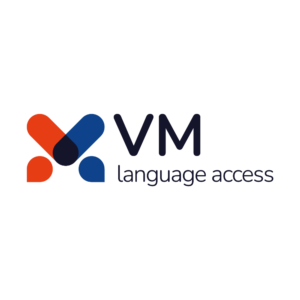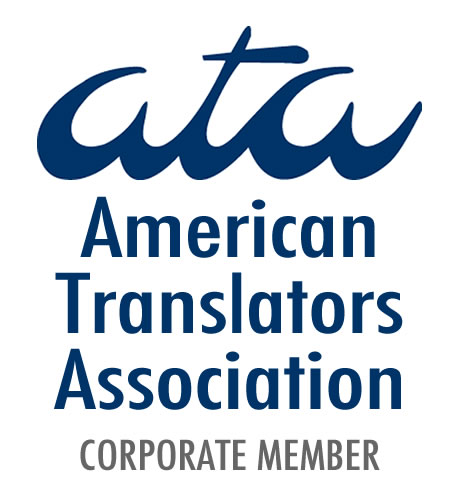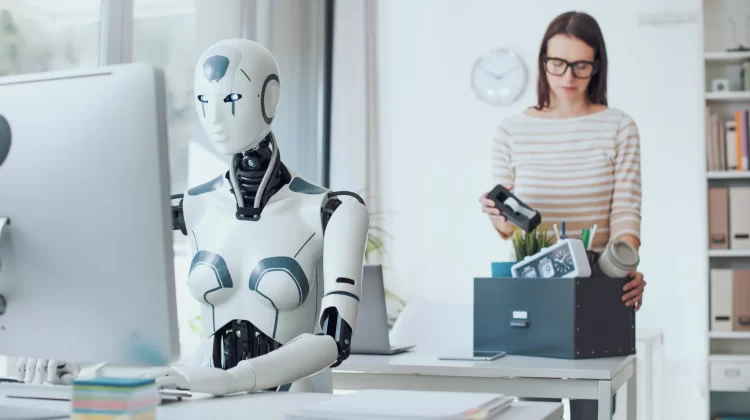
AI and Job Losses in the Translation Industry: Should Translators Worry?
As the world becomes more connected, the demand for translation services continues to grow. And with the rapid advancements in technology, artificial intelligence (AI) is beginning to play an increasingly prominent role in this industry. AI-powered translation tools like Google Translate, DeepL, and others have become essential in breaking down language barriers in real-time communication. But with the rise of these technologies, many translators are left wondering: Will AI replace translators? Should we be concerned about AI and job losses in the translation industry?
The truth is, while AI’s impact on translation jobs is undeniable, it’s not as straightforward as AI simply replacing humans. There’s a lot more nuance to this discussion, and it’s important to look at the facts behind the hype. In this article, we’ll dive into the evolving relationship between AI and human translators, why AI won’t fully replace translators, and how professionals in the field can adapt and thrive in this new landscape.
The Rise of AI in the Translation Industry
AI has made significant strides in the translation industry, primarily through machine translation tools that utilize neural networks and deep learning. Neural machine translation (NMT) is a powerful AI technique that learns from large amounts of bilingual text data and applies that knowledge to generate translations. The more data these systems process, the better they become at predicting what words or phrases should be translated into which language.
Over the last decade, AI-powered translation tools have improved in accuracy, making them more useful for businesses and individuals who need fast, basic translations. These tools can process vast amounts of text in seconds, which is a huge benefit when dealing with simple and straightforward content. Google Translate, for example, can handle over 100 languages, and platforms like DeepL offer translations that often come close to those of human translators, especially for commonly spoken languages.
But, despite these technological advancements, AI still falls short when it comes to producing high-quality translations, especially in more specialized fields like legal, medical, or literary translation. This is where human translators continue to play an essential role.
The Limitations of AI in Translation
While AI has made impressive progress, it’s important to recognize its limitations. AI-powered translation tools may be able to generate basic translations quickly, but they still struggle with more complex tasks that require human expertise.
1. Context and Nuance
Language is more than just words; it’s filled with nuances, idiomatic expressions, cultural references, and emotions. AI struggles with these subtleties, often producing translations that are technically correct but lack the depth, tone, and meaning of the original text. A phrase that makes perfect sense in one language may be completely lost when translated literally by AI. For example, idiomatic expressions, wordplay, and jokes can’t always be understood by AI, resulting in awkward or even incorrect translations.
Human translators are able to understand these nuances and convey them accurately, ensuring the translated text resonates with the target audience in the same way the original did. This is something AI simply cannot replicate.
2. Cultural Sensitivity
Translation isn’t just about swapping words; it’s about ensuring that the translated text is culturally appropriate. Language is deeply intertwined with culture, and a good translator must be aware of cultural differences, customs, and sensitivities. For instance, certain words or phrases may be considered offensive in one culture but harmless in another.
AI tools, on the other hand, are not capable of grasping these cultural subtleties. They lack the understanding of the deeper context that a human translator can provide, leading to translations that may be technically correct but culturally insensitive or inappropriate. This is particularly important in sectors like marketing, where a poorly translated message could harm a brand’s reputation.
3. Specialized Fields
AI has its strengths in handling general translations, but it struggles when it comes to specialized fields such as legal, medical, and technical translations. These areas require a deep understanding of terminology, context, and the specific needs of the target audience. For example, a legal document must be translated with precision, ensuring that every term is accurate and legally valid in the target language. AI often fails to capture the intricacies of these specialized terms, which can lead to serious errors.
Human translators with expertise in these fields can provide the level of accuracy and understanding that AI simply cannot match. Whether it’s translating a medical journal or drafting a legal contract, human translators are crucial in ensuring the integrity and correctness of specialized content.
4. Quality Assurance
Even the best AI tools are not perfect. They can make mistakes, especially when dealing with complex texts or sentences that don’t follow standard patterns. This is why post-editing is so important. AI can provide a first draft of a translation, but it’s still up to human translators to review and refine the translation for quality and accuracy.
While AI tools like Google Translate have gotten better over the years, they still require human oversight to ensure the translation is precise and aligned with the intended meaning. Human translators bring their knowledge, experience, and critical thinking to the process, ensuring that the final product meets the highest standards.
The AI Impact on Translation Jobs: Should Translators Worry?
The big question on everyone’s mind is whether AI will eventually replace human translators altogether. Will AI lead to massive job losses in the translation industry? The short answer is no—not in the way that many people fear. While AI is certainly changing the way translation is done, it’s unlikely to fully replace human translators anytime soon.
1. AI as a Tool, Not a Replacement
Instead of viewing AI as a direct competitor, it’s more useful to think of it as a tool that can enhance the work of human translators. AI is great for handling large volumes of basic text, but it still requires human oversight for more complex tasks. Rather than replacing translators, AI is likely to change the nature of translation work, making it faster and more efficient.
AI can assist with tasks like translating routine emails, social media posts, or simple documents. However, when it comes to projects that require a deep understanding of culture, context, and language, human translators will remain essential. In fact, translators who embrace AI tools and integrate them into their workflows may find themselves more productive and competitive in the job market.
2. New Roles and Opportunities for Translators
The rise of AI in translation doesn’t necessarily mean the end of the profession. In fact, it could open up new roles for translators. As AI tools become more widely used, businesses will still need professionals to review, edit, and refine machine-generated translations. Post-editing, where a human translator revises an AI-generated translation to ensure accuracy and quality, is already becoming an important skill in the industry.
Additionally, as AI tools become more advanced, there will be an increasing demand for translators with expertise in specific areas. Specialized fields like legal, medical, and technical translation will continue to require the expertise of human professionals, especially for high-stakes translations where accuracy is critical.
3. Upskilling and Adapting to New Technologies
Translators who are proactive about learning how to use AI tools will be better positioned for the future. Understanding how to work alongside AI, rather than competing with it, will be key to staying relevant in the industry. For example, translators can learn how to use AI tools to speed up the initial translation process, allowing them to focus on more nuanced aspects of the translation, like cultural adaptation and quality assurance.
Additionally, many AI-powered translation tools are designed to integrate seamlessly with translation memory systems, which store previously translated segments for future use. By learning how to use these systems effectively, translators can improve their efficiency while still delivering high-quality translations.
The Future of Human Translators in an AI-Driven World
So, what does the future hold for human translators in a world where AI plays such a significant role? While AI will certainly continue to evolve and improve, the need for human expertise will never disappear. In fact, the future of human translation will likely involve more collaboration between humans and AI.
Rather than competing with AI, translators will become experts in using these tools to their advantage. By leveraging the speed and efficiency of AI, translators can focus on the aspects of translation that require human intelligence, creativity, and cultural understanding.
AI will also open up new opportunities for translators who are willing to adapt. As businesses and individuals continue to demand faster, more accurate translations, the demand for skilled translators who can work with AI tools and provide quality control will only increase. Those who are willing to embrace this new technology will be in a stronger position than those who resist it.
Embracing the Future of Translation
In conclusion, the fear of AI and job losses in the translation industry is somewhat misplaced. While AI tools are certainly reshaping the translation landscape, they are not likely to fully replace human translators anytime soon. Instead, AI should be seen as an opportunity to enhance translation workflows, improve efficiency, and open up new avenues for professionals in the field.
The future of translation will involve a balance between human expertise and AI technology, where each complements the other. Translators who embrace new technologies and upskill to work alongside AI will continue to thrive in the evolving industry.
For those who are concerned about AI taking over, the key to staying relevant is adapting to the changing landscape, leveraging AI tools to your advantage, and focusing on the aspects of translation that require the human touch—nuance, context, creativity, and cultural understanding.
So, should translators worry? Not really. Instead, they should prepare to thrive in a world where AI and human expertise work hand-in-hand to create better, faster, and more accurate translations than ever before.
At VM Language Access, we understand the evolving translation landscape and continue to embrace new technologies while providing top-notch human expertise. Contact us today to learn how we can help you navigate the changing world of translation and deliver high-quality results every time.

